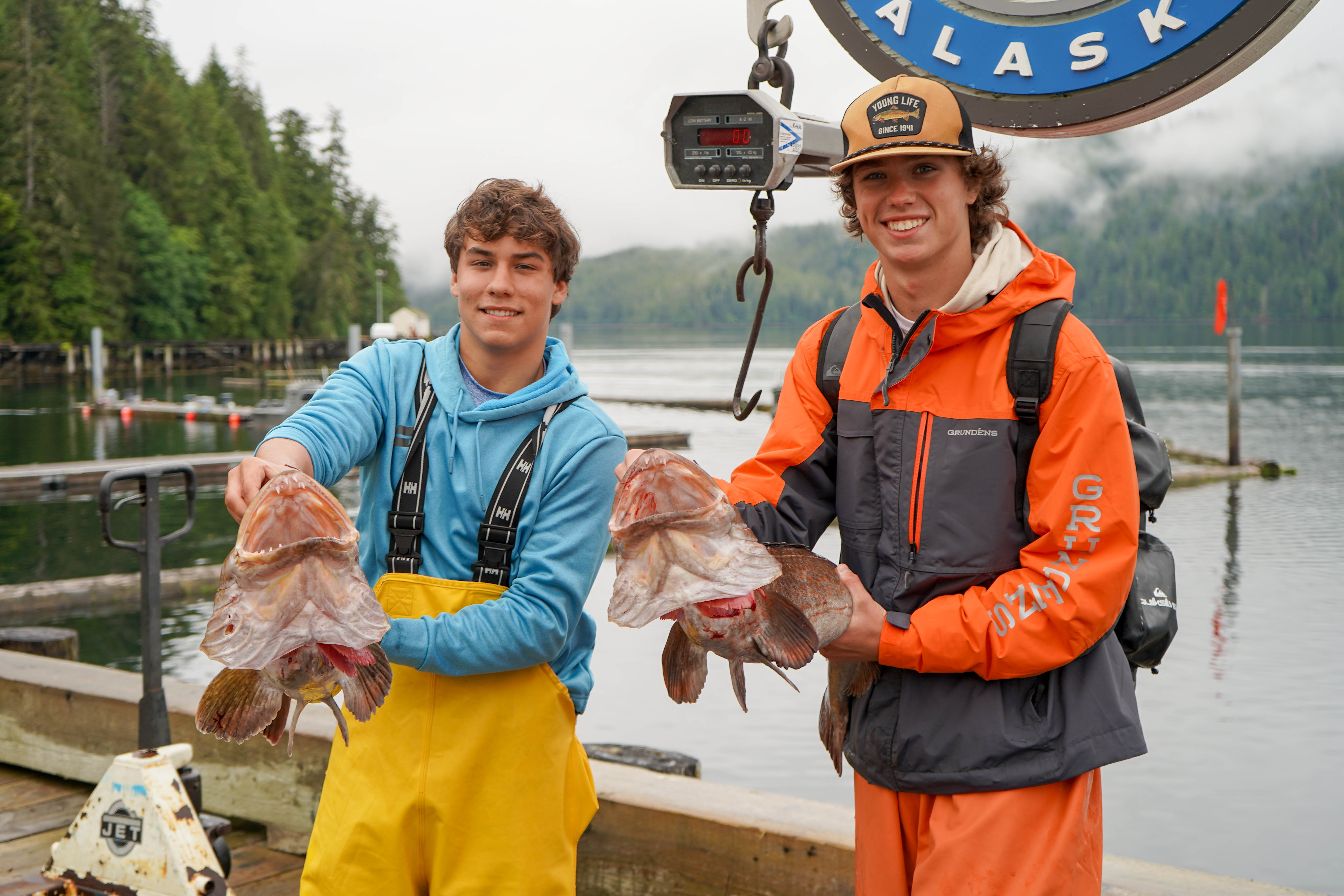
FISH
Ling On! All About Alaska’s Feisty, Fan-Finned Favorite
Part of any great Alaska fishing trip is reeling in your first lingcod, aka Ophiodon elongatus, that mottled brown, long-bodied, beer-bellied, big-lipped creature of the deep with fanlike fins and steel-trap jaws studded with razor-sharp teeth.
Habitat and Range
Lingcod are unique to the West Coast of North America, found from the Gulf of Alaska to Baja California. These ambush predators thrive at depths up to 1,000 feet but typically inhabit rocky reefs near the shore, often in water around 150-200 feet deep. At Waterfall Resort, we often find them around 45 feet but prefer to target pinnacles where large lures or baits can attract the biggest catches.
Size and Records
Lingcod can weigh anywhere from 5 to 85 pounds, with some particularly impressive specimens making it to 100 pounds in rare cases. The record at Waterfall Resort is a whopping 69.3 pounds!
Diet and Hunting Style
Aggressive and notoriously voracious, lingcod hunt fish up to twice their size, including salmon, rockfish, herring, and even octopus. Known for their opportunistic and tenacious natures, they’ve been seen latching onto hooked fish, resulting in the occasional "twofer" when anglers reel in a second, unaffiliated lingcod clamped onto their catch!
Fun Facts About Lingcod
- Not actually cod: Lingcod are part of the greenling family, not true cod.
- Nutrient-dense: Similar to salmon, lingcod are rich in protein, minerals, vitamins, and omega-3 fatty acids.
- Unusual colors: While most lingcod are brown with white flesh, some have a unique blue-green tint, giving them turquoise-colored fillets. This color vanishes in the cooking process, and studies suggest no difference in taste or nutritional value.
Common Questions About Lingcod in Alaska
-
What is the best time to fish for lingcod in Alaska?
The prime season for lingcod fishing in Alaska runs from mid-July through September, as these months provide warmer waters that bring lingcod closer to shallower reefs. -
Are lingcod safe to eat?
Absolutely! Lingcod are a popular choice for their mild, slightly sweet flavor and tender texture. They’re highly versatile and can be grilled, baked, or fried. -
Why do some lingcod have blue-green flesh?
While scientists are still researching, the green or turquoise hue may come from biliverdin, a bile pigment. It’s entirely safe to eat, with no impact on flavor or nutritional value. -
What do you need to catch lingcod?
Lingcod respond well to larger baits and lures, particularly on rocky, uneven seabeds. We recommend jigs or live bait fished near the bottom for the best chance to reel in a big one.
Let’s Go Fishing!
Lingcod are true prizes of Alaskan waters. Their fierce bites, stunning colors, and exciting fights on the line make them unforgettable for every angler. Let’s get out there and see what we can catch!
